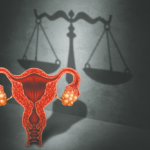In the presented case, guiding the patient toward a decision should be as information focused and nondirective as possible. The first step is to understand what the risk of a medication exposure is to the developing fetus. In this particular circumstance, good data exist to suggest that the highest risk period for in utero methotrexate exposure is between 6–8 weeks of gestation at doses greater than 10 mg a week.7 There have been case reports of pregnancies in which the fetus did not suffer any congenital anomalies, and this needs to be disclosed to the patient as well.8 Nonetheless, most clinicians would maintain that methotrexate is highly teratogenic and ought to be avoided in women desiring pregnancy.9 For some patients, this potential risk in the early embryonic stage will be of great enough concern that they elect early termination of pregnancy. Others may feel uncomfortable making any decision without a more realistic assessment of the actual risk of congenital anomaly occurring in the fetus. In these circumstances, referral to a maternal–fetal medicine specialist for a high resolution–screening ultrasound at the time following organogenesis can be helpful in determining whether a fetal malformation has occurred. Timing of this evaluation is crucial as patients who opt for a late-term termination upon discovery of an anomaly are restricted by state statutes on the timing of such procedures. While, arguably, antenatal diagnosis supports indication-based approaches to selective termination, I disagree with the notion that “Clinicians tend to understand prenatal diagnosis and termination of pregnancy as parts of the same clinical pathway, which shapes their clinical actions and decisions to a substantial degree.”10 Rather, I would maintain that prenatal diagnosis allows the clinician to impart important information to patients, thereby enabling them to make an informed autonomous decision.
Conclusion
How one should counsel the pregnant patient in the case of a potentially teratogenic medication exposure is difficult. The uncertainty as to whether the fetus has suffered teratogenic effects in addition to the interplay of both the treating clinician’s and patient’s religious, ethical, and philosophical beliefs contribute to the complex decision making these cases invoke. In these circumstances, the clinician needs to divorce his or her own beliefs from the decision-making process. This is best done by providing as much information to patients about potential risk to the developing fetus and, when appropriate, high-technology screening to assess for the development of a congenital anomaly. The clinician’s role is, therefore, to provide information, support, and appropriate referrals for management, but not to impart influence and judgment.

